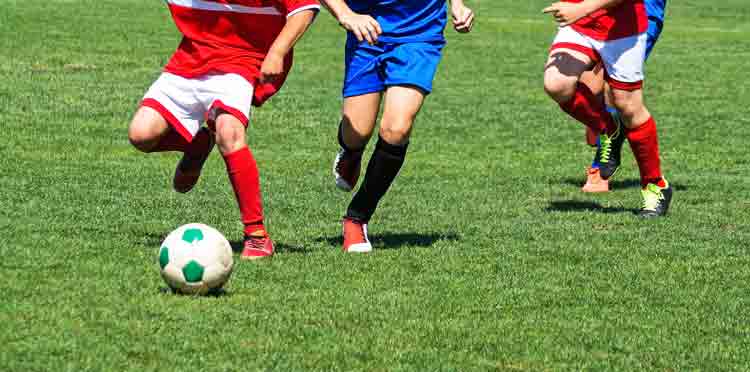
Thursday, September 17, 2015
Heat Illness in Children

Wednesday, September 16, 2015
Your child's sports injury: the foot

Stress Fractures
Metatarsal Stress Fracture
This is a small crack in one of the metatarsal (toe) bones, usually the 2nd or 3rd toe, and typically occurs in runners. There will be point tenderness over the area on examination. Treatment is rest for 6 weeks and using shoes with good arch support.
Navicular Stress Fracture
This is a tricky fracture of the upper bone in the foot called the navicular bone that occurs in athletes in running sports. They complain of vague, non-localizing pain at the dorsum (top) of the foot. These do not show up on imaging right away, so after a few weeks an MRI may be needed to make the daignosis. Treatment is casting and immobilization for 8 weeks
Calcaneal Stress Fracture
Fracture of the heel bone. Occurs in athletes engaging in running sports, and is characterized by pain in the heel with walking or running. Pain can be elicited on exam by squeezing the heel bone. Imaging may be needed to make the diagnosis, and treatment is 8 weeks of immobilization.

Sever Disease
Inflammation of the bottom of the Achilles tendon where it attaches to the heel bone (calcaneus). It occurs in prepubescent boys, during exercise, in both lower legs. The treatment is RICE and shoes with good arch support, and will heal in about 2 months.

Plantar Fasciitis
Athletes will report morning heel pain after several hours of rest or during the first few steps of the day. The treatment is rest, and pain is gone after about 6 months.

Tuesday, September 15, 2015
The Newborn Foot Examination



Sunday, April 26, 2015
Newborn Nursery
Thinking about having a baby?
Ever wonder what happens in the newborn nursery?
Multiple factors affect the care of a newborn in the first 48 hours. Here are just a small number of scenarios encountered and managed by pediatricians in the nursery:
Small for gestational age (SGA): <10th percentile for weight. If no apparent reason for the small weight (maternal hypertension or tobacco use), the urine is tested for infection (cytomegalovirus) and drugs. If the infant is below 2500 grams (5.5 pounds), a car seat evaluation is performed (to ensure infant can breathe well while in the car seat) and breastfeeding may be supplemented with a high-calorie formula. A blood test is performed to check hemoglobin levels.
Large for gestational age (LGA): >90th percentile for weight. The biggest concern is polycythemia (or too much blood), so a blood test is performed to check the hematocrit.
Preterm: Very premature infants go to the NICU for intensive care. The babies just under 37 weeks, however, can stay in the nursery. There, as with SGA , a car seat evaluation may be performed and breastfeeding may be supplemented with a high-calorie formula. A blood test is performed to check hemoglobin levels.
Meconium-stained amniotic fluid: The infant’s first stool is accidently passed into the amniotic fluid before delivery. The consistency ranges from thin to thick. This can be dangerous if the infant inhales the material during his or her first breath, resulting in respiratory distress known as meconium aspiration syndrome. A resuscitation team will be present in case this happens and will perform deep suctioning to remove it.
Chorioamnionitis: Infection of the amniotic fluid that the fetus lives in. A maternal infection, defined as fever of 100.4 degrees or greater along with other signs, could cause this fluid to get infected, which is potentially deadly for the infant. Blood tests are drawn to check for signs of infection in the baby. Antibiotics are started prophylactically. The tests are repeated at 36 hours of life.
Breastfeeding is always encouraged in infants. Most babies turn out just fine, but it's good to always be prepared.


